If you asked anyone to name the first thing that came to mind when you said “New York City,” very rarely would you hear words like nature or birds. Contrary to popular assumptions, however, New York City serves a crucial role in the migration of birds during the spring and winter.
Life is a Flyway
Many of us have heard the phrase “flying south for the winter,” describing the phenomenon in which flocks of birds that reside in the Northern Hemisphere leave for warmer, more resource-rich Southern Hemispheric areas, where they nest and breed. After a long winter, these birds will follow the same paths to take advantage of the food sources and springtime warmth that have emerged in the north.
The routes taken by these birds are known as flyways. New York City happens to sit in one of the four major flyways that span the Americas, the Atlantic Flyway. This flyway stretches all the way from Greenland and Northeast Canada to the Caribbean islands of the Atlantic Ocean. Many of the birds that use this flyway travel at night, using topographical cues like mountains, rivers, and coastlines to navigate. During the day, these birds rest and hang out in different green spaces along the route.
Maybe you’re already hearing more birds chirping as we prepare for spring, so take some time to admire the city’s most consistent tourists as they make their way back home.
Where Can We See Birds During the Spring Migration in NYC?
During the spring migration, which peaks in April/May in NYC, over 300 bird species can be observed stopping in some of our favorite green spaces in the city. In our Tri-I neighborhood, Rockefeller is a great spot to see birds year-round and during their migratory journeys. Outside of our daily stomping grounds, major New York City parks can be found in all five boroughs, providing many opportunities to see these birds in action—see the opposite page for more!
Central Park (Manhattan) – Ol’ Reliable
For many, Manhattan’s Central Park is the first thought when it comes to a notable green space in NYC. Boasting over 843 acres with 200 acres of dedicated woodlands, Central Park is easily accessible, large, and a hot spot for many migratory and permanent birds. The North Woods and the Ramble are two of the largest wooded areas in the park, offering gorgeous views of the flora and an opportunity to catch flecks of colors in the greenery as birds dart from tree to tree.
Birds to see here:
- Scarlet Tanager (Piranga olivacea)

- Red-winged Blackbird (Agelaius phoeniceus)

- Hooded Warbler (Setophaga citrina)
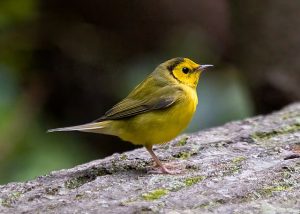
Jamaica Bay Wildlife Refuge (Queens/Brooklyn) – Hidden in Plain Sight
If you’re landing at JFK during the day, look outside your window to observe the vast wetlands that surround the area. As part of the Gateway National Park, Jamaica Bay Wildlife Refuge is known for being an urban birdwatcher’s paradise. The 1.5-hour journey out to the refuge from Manhattan is always worth the trek, as the quiet natural landscape provides a peaceful contrast to the rest of the city’s hustle and bustle. The salt marshes throughout the park offer stunning observations of migratory shorebirds and waterfowl, while the skies and trees hold soaring birds of prey or small, trilling groups of songbirds.
Birds to see here:
- Osprey (Pandion haliaetus)
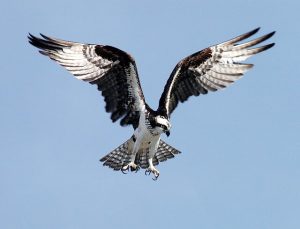
- American Oystercatcher (Haematopus palliates)
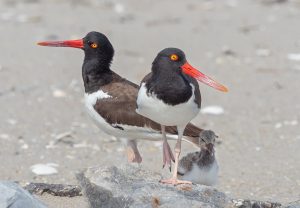
- Broad-winged Hawk (Buteo platypterus)
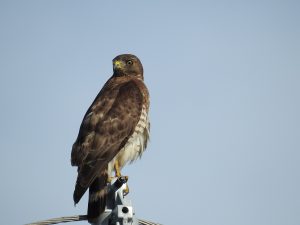
Pelham Bay Park (Bronx) – The Melting Pot of the Bird World
If you are looking for another 1.5-hour trek, this time towards the northeast from Manhattan, Pelham Bay Park is the spot for you. In addition to being the city’s largest park, Pelham Bay Park houses beaches, miles of shoreline, and seemingly endless hiking trails. And the cherry on top is that some of the most sought-after birds can be found here—think owls, hawks, and the elusive American Woodcock. Pelham Bay is known for its notable bird residents year-round, but the spring migration is especially productive for birdwatching. Approximately eighty species use this area for breeding during the Spring, and over 200 other species are passersby that can be seen in the park’s multiple ecosystems.
Birds to see here:
- American Kestrel (Falco sparverius)
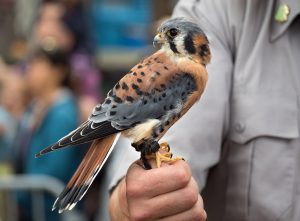
- American Woodcock (Scolopax minor)
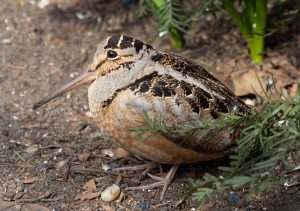
- Red-eyed Vireo (Vireo olivaceus)
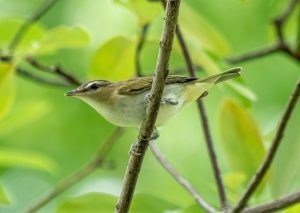
How Can You Become a Birdwatcher?
If you are interested in birdwatching but have never tried it, know that it is as simple as getting up and going. All you need is yourself, some good walking shoes, and, hopefully, some binoculars. For your first walk, I recommend some more affordable binoculars to get you started, as prices can get steep as the products become more advanced (some parks offer binoculars; just ask!). The recommended locations given above are by no means an exhaustive list. Each borough has many notable birding spots, and each comes with its own perks.
As conservation efforts and record-keeping for species in our area increase, opportunities to participate in bird-related citizen science have become available. Before you head out for your first bird walk, download the Cornell Lab of Ornithology’s Merlin App for help with identifying the birds you encounter. As you venture through your location of choice, you can either enter physical features of the bird or record the calls you hear, and the app will tell you what you are observing. Working in tandem with Merlin is the eBird app, where each bird sighting gets logged and can be shared with others. This information is crucial to conservationists working to track our flying friends in the city. These apps also add a new level of fun to the already engaging practice of birdwatching—think Pokemon Go! in real life.
According to the Survey of Fishing, Hunting, and Wildlife-Associated Recreation, ninety-six million Americans participated in bird-related activities in 2022, including birdwatching, avian photography, or maintaining natural spaces to preserve birds. This is almost double the reported number in 2016, when the survey was last administered. Now is the perfect time to pick up this new hobby. Observing the natural world is ingrained into us as members of the Tri-I, and more information is coming out about the benefits of birdwatching for our mental and physical health. Birdwatching allows you to be quiet, yet engaged, gain new respect for the natural world we inhabit, and see some fascinating creatures. This spring, plan a bird walk in one of the city’s many green spaces or join any of the city’s inclusive bird groups—you won’t regret it.
